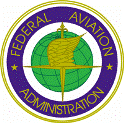Bird Strike Committee Proceedings

Other Bird Strike and Aviation Materials
Document Type
Article
Date of this Version
6-2008
Abstract
The Federal Aviation Administration produced this report in cooperation with the U. S. Department of Agriculture, Animal and Plant Health Inspection Service, Wildlife Services.
This report presents a summary analysis of data from the FAA’s National Wildlife Strike Database for the 18-year period 1990 through 2007. Unless noted, all totals are for the 17-year period, and percentages are of the total known. Because of the large amount of data, Tables 2 through 17 present 18-year totals only and do not display data for individual years, 1990 through 2007. A sample of significant wildlife strikes to civil aircraft in the USA during 2007 is presented in Appendix A. These recent strike examples demonstrate the widespread and diverse nature of the problem.
An analysis of 18 years of strike data reveals the magnitude and severity of the wildlife-aircraft strike problem for civil aviation in the USA. Wildlife strikes continue to pose a significant economic and safety risk for civil aviation in the USA. Management actions to reduce wildlife strikes are being implemented at many airports (e.g., Wenning et al. 2004, DeFusco et al. 2005, Dolbeer 2006a), but much work remains to be done to reduce wildlife strikes. To address the problem, airport managers first need to assess the wildlife hazards on their airports (Cleary and Dolbeer 2005). They then must take appropriate actions, under the guidance of professional biologists trained in wildlife damage management, to minimize the risks posed by wildlife. The aviation community must also widen its view of wildlife management to consider habitats and land uses in proximity to the airport. Wetlands, dredge spoil containment areas, waste-disposal facilities, and wildlife refuges can attract hazardous wildlife. Such land uses are often incompatible with aviation safety and should either be prohibited near airports or designed and operated in a manner that minimizes the attraction of hazardous wildlife. The manual Wildlife Hazard Management at Airports (Cleary and Dolbeer 2005) provides guidance to airport personnel in developing and implementing wildlife hazard management plans. Adobe Acrobat© PDF versions of the manual are available online in English, Spanish, and French at http://wildlife-mitigation.tc.faa.gov.


Comments
FEDERAL AVIATION ADMINISTRATION, NATIONAL WILDLIFE STRIKE DATABASE, SERIAL REPORT NUMBER 14
REPORT OF THE ASSOCIATE ADMINISTRATOR OF AIRPORTS, OFFICE OF AIRPORT SAFETY AND STANDARDS AIRPORT SAFETY & CERTIFICATION, WASHINGTON, DC